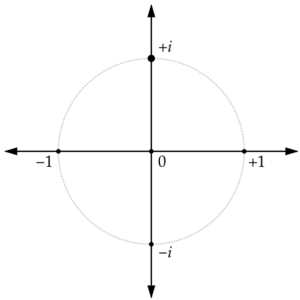Imaginary unit (nonfiction)
The imaginary unit or unit imaginary number (i) is a solution to the quadratic equation x2 + 1 = 0. There is no real number with this property, hence the term imaginary.
i can be used to extend the real numbers into complex numbers, using addition and multiplication. A simple example of the use of i in a complex number is 2 + 3i.
Imaginary numbers are an important mathematical concept, which extend the real number system ℝ to the complex number system ℂ, which in turn provides at least one root for every nonconstant polynomial P(x).
There are two complex square roots of −1, namely i and −i, just as there are two complex square roots of every real number other than zero, which has one double square root.
In contexts where i is ambiguous or problematic, j or the Greek ι is sometimes used. In the disciplines of electrical engineering and control systems engineering, the imaginary unit is normally denoted by j instead of i, because i is commonly used to denote electric current.
In the News
A complex number can be visually represented as a pair of numbers (a, b) forming a vector on a diagram called an Argand diagram, representing the complex plane. "Re" is the real axis, "Im" is the imaginary axis, and i satisfies i2 = −1.
Fiction cross-reference
Nonfiction cross-reference
External links:
- Imaginary unit @ Wikipedia

